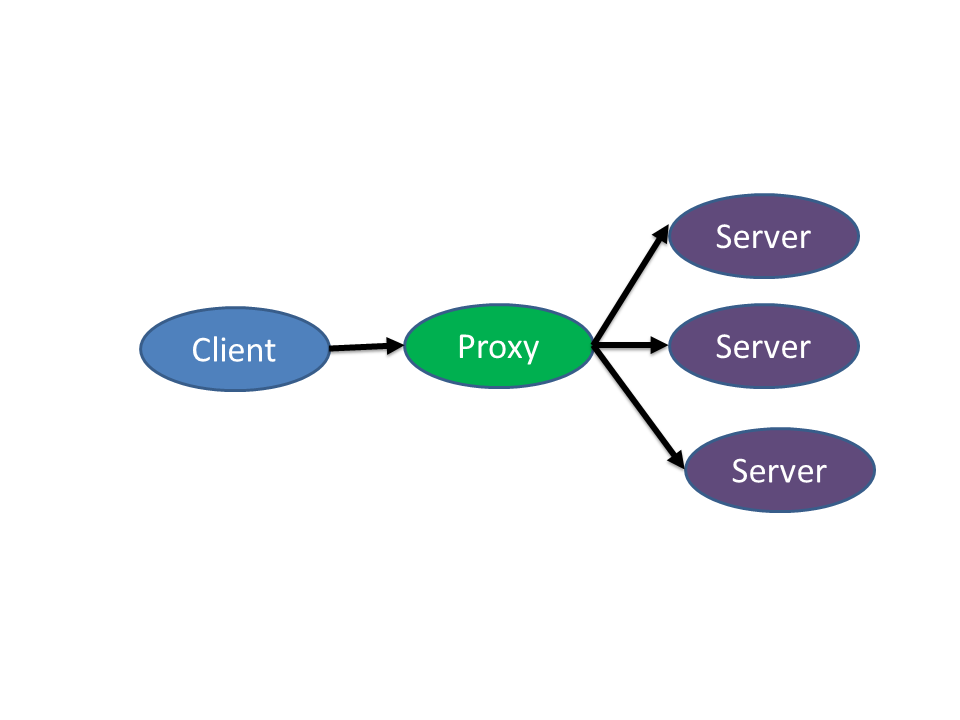
Basic Concept
The most common use of nginx is to provide reverse proxy services, so what is a reverse proxy? I believe that many mainland compatriots have used forward proxy in this magical land. The principle is roughly as follows:

The proxy server accepts requests as an intermediary on the client side. , hide the real client and obtain resources from the server. If the proxy server is outside the Great Wall, it can also help us achieve the purpose of crossing the Great Wall. As the name suggests, reverse proxy is to reverse the proxy server as an intermediary for the server, hiding the server that actually provides services. The principle is roughly as follows:

This is of course not done to achieve bypass Great Wall, but to achieve a series of functions such as security and load balancing. The so-called security means that the client's request will not fall directly to the intranet server but will be forwarded through a proxy. At this layer, a series of strategies such as security filtering, flow control, and DDoS prevention can be implemented. Load balancing means that we can horizontally expand the number of servers that actually provide services on the backend. The agent forwards requests to each server according to rules, so that the load of each server is close to balanced.
And nginx is such a popular reverse proxy service.
Under ubuntu, you can skip the compilation and installation process and directly apt-get
Copy the code The code is as follows:
sudo apt-get install nginx
After installation, you can directly start the nginx service through:
Copy the code The code is as follows:
sudo service nginx start
, nginx is set by default For the forwarding of port 80, we can check it by accessing http://locallhost in the browser.
Initial configuration
nginx’s default configuration file is located at
Copy code The code is as follows:
/etc/nginx /nginx.conf
The best way to learn configuration is to start with examples. Let’s not look at other configurations first, but directly look at the configurations related to the nginx default page. There is a line in the configuration file:
Copy code The code is as follows:
include /etc/nginx/sites-enabled/*;
This line loads a For external configuration files, there is only one default file in the sites-enabled folder. This external configuration file is responsible for the default proxy of our nginx. After shrinking the configuration content, you get the following lines:
Copy code The code is as follows:
server {
server_name localhost;
listen 80 default_server;
listen [::]:80 default_server ipv6only=on;
root /usr/share/nginx/html;
index index.html index.htm;
location / {
try_files $uri $uri/ =404;
}
}
A large website usually has many subordinate sites, each with its own server providing corresponding services. In nginx We can isolate these different service configurations through a concept called virtual host. This is the meaning of server in the above configuration. For example, Google has two products: translation and academic. We can configure two servers in the nginx configuration file. The servernames are translate.google.com and scholar.google.com respectively. In this way, different URL requests will correspond. Go to the corresponding settings of nginx and forward to different back-end servers. The servername here matches the host line in the client http request.
In this example, server_name is localhost, which is why we can access the page configuration through localhost in the browser. The following two listens correspond to the listening ports under ipv4 and ipv6 respectively. If set to 8080, then we can only access the default page through localhost:8080.
default_server means that if there are other http request host settings that do not exist in nginx, then the configuration of this server will be used. For example, if we access 127.0.0.1, it will also fall to this server for processing.
Each url request will correspond to a service, which nginx will process and forward, either a local file path, or a service path of other servers. The matching of this path is performed through location. We can think of server as the configuration corresponding to a domain name, and location as the configuration of a more granular path under a domain name.
Here, all requests starting with location matching /, that is, /xxx or /yyy under localhost, must go through the following configuration. In addition to this simple and crude matching, nginx also supports regular and complete equality and other fine matching methods. . And tryfiles means that nginx will access the files in the following order and return the first matching one. For example, if you request localhost/test, it will look for the /test file. If it cannot find it, it will look for /test/. If it cannot find it, it will return a 404. In addition, we can also use proxypass in the location configuration to implement reverse proxy and load balancing, but this simplest configuration does not involve
where root refers to a local folder as the root of all url requests path. For example, if the user requests a localhost/test, then nginx will look for the test file in the /usr/share/nginx/html folder and return it.
And index is the default access page. When we access localhost, it will automatically search for index.html and index.htm in the root file path in order and return the first found result.
location Advanced configuration
The above configuration only maps the user's URL to a local file, and does not implement the legendary reverse proxy and load balancing (of course nginx does static The distribution of files is also very impressive), let’s further configure the location to see how to achieve it.
The configuration is very simple. For example, if I want to transfer all requests to port 8080 of a machine that actually provides services, just do this:
Copy code The code is as follows:
location / {
proxy_pass 123.34.56.67:8080;
}
In this way, all requests will be reverse proxy to 123.34.56.67. In this way, our reverse proxy function has been implemented, but how can there be any load balancing if we can proxy to a server? This requires the upstream module of nginx.
Copy code The code is as follows:
upstream backend {
ip_hash;
server backend1.example.com;
server backend2.example.com ;
server backend3.example.com;
server backend4.example.com;
}
location / {
proxy_pass http://backend;
}
We specified a group of machines in the upstream and named this group backend. In this way, in proxypass, as long as the request is transferred to the backend in the upstream, we can achieve reverse proxy plus load balancing on four machines. The iphash indicates that our balanced method is to allocate according to the user's IP address.
To make the configuration take effect, we don’t have to restart nginx, we just need to reload the configuration.
Copy code The code is as follows:
sudo service nginx reload
The above is the detailed content of Nginx initialization configuration method. For more information, please follow other related articles on the PHP Chinese website!
 nginx restart
nginx restart
 Detailed explanation of nginx configuration
Detailed explanation of nginx configuration
 Detailed explanation of nginx configuration
Detailed explanation of nginx configuration
 What are the differences between tomcat and nginx
What are the differences between tomcat and nginx
 Main uses of Linux operating system
Main uses of Linux operating system
 How to turn off sublime auto-completion
How to turn off sublime auto-completion
 How to open php in a web page
How to open php in a web page
 How to solve the problem that js code cannot run after formatting
How to solve the problem that js code cannot run after formatting
 How to open csv file
How to open csv file




